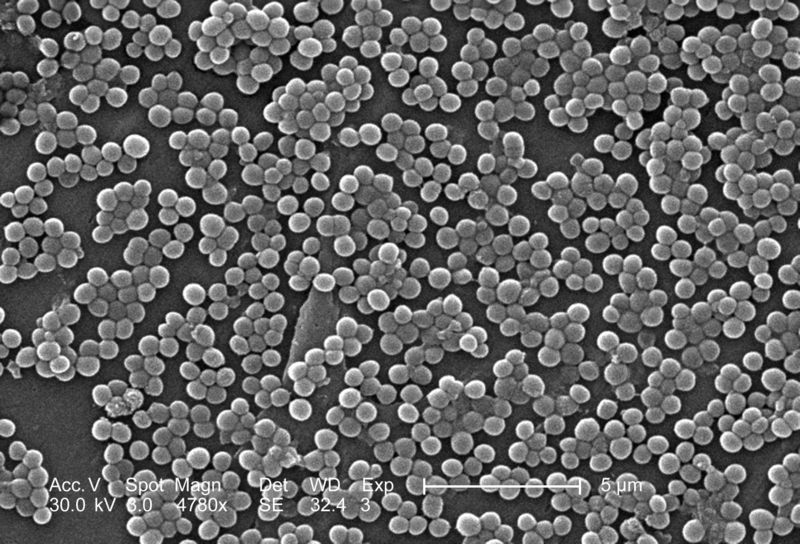Researchers have discovered that the key to killing MRSA may lie with one of its own relatives. In a paper published in Nature this week, Jikei University School of Medicine scientist Tadayuki Iwase and his colleagues show how a common species of "good" bacteria frequently found on the skin, Staphylococcus epidermidis, produces a chemical weapon that disables its impetigo-inducing cousin, Staph aureus, includeing MRSA. 
More than one person in three is colonised with Staph aureus, which is a risk factor for developing Staphylococcal infections elsewhere around the body, but some individuals seem to be able to evade carrying the bug in this way. To find out how, the team swabbed the nasal cavities, where Staph is known to lurk, of 88 volunteers. Predictably, twenty eight (32%) were Staph aureus carriers. But more than 90% of the volunteers were also carrying a second Staph species called Staphylococcus epidermidis, one of the most common human commensal or "good" bacteria and it seems that this friendly bug holds the key to kicking out Staph aureus in some people.
The reason, the team found, is that some strains of Staph epidermidis secrete a factor called Esp, an enzyme known as a serine protease, which behaves like the microbiological equivalent of a mace spray, dispersing crowds of Staph aureus and rendering them vulnerable to a bug-killing chemical secreted onto the skin by the immune system called hBD2 - human beta-defensin 2.
So why would Staph epidermidis want to kick out its own cousin? Pure selfishness is the answer. By taking up space and resources, Staph aureus is competing with its more human-friendly relative, which responds by poisoning it! It's tempting to speculate that it might be possible to exploit this newly-uncovered example of bacterial biological warfare as a novel way to deal with Staph aureus infections elsewhere in the body.










Comments
Add a comment